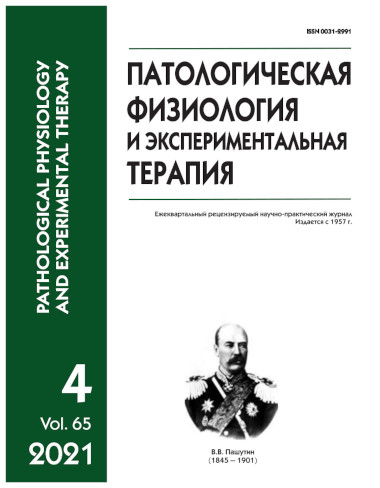Changes in the urinary content of uromodulin oligomeric forms in rats during development of urolithiasis
Abstract
Studying uromodulin oligomeric forms in the development of urolithiasis is an important basic and applied issue. Despite the variety of in vivo models of urolithiasis, there is currently no information about time-related changes in urinary concentration and fractional composition of uromodulin oligomeric forms in animals at various stages of this pathological process. Aim. Time-related changes in urinary oligomeric uromodulin forms were studied in animals with developing hyperoxalate urolithiasis induced by administration of 1% ethylene glycol as a non-alternative source of drinking. Methods. General clinical and biochemical tests of blood and urine were performed at various stages of the pathological process. Urine sediment was examined prior to modeling the pathology and during the administration of exogenous ethylene glycol. The urinary content of oligomeric uromodulin forms was measured by analysis of nanoparticles tracks and dynamic light scattering. Results. It is shown that against the background of the pathology development there is a decrease in the concentration of oligomeric forms of uromodulin in the urine, at the initial stages of pathology development due to an increase in the fraction of large particles (over 200 nm, oligomeric form 28 МDa). With further development of the pathological process at the final stage, there is a radical decrease in the concentration of particles in the urine (more than 2-fold). Conclusion. The duration of pathological process relatively weakly correlated with the severity of urolithiasis (Pearson's r = 0.49, p-value = 0.0003). The urinary concentration of uromodulin oligomers decreased with the increase in the number of crystals in urine sediment, which was probably associated with inclusion of uromodulin into the structure of sediment crystals.






